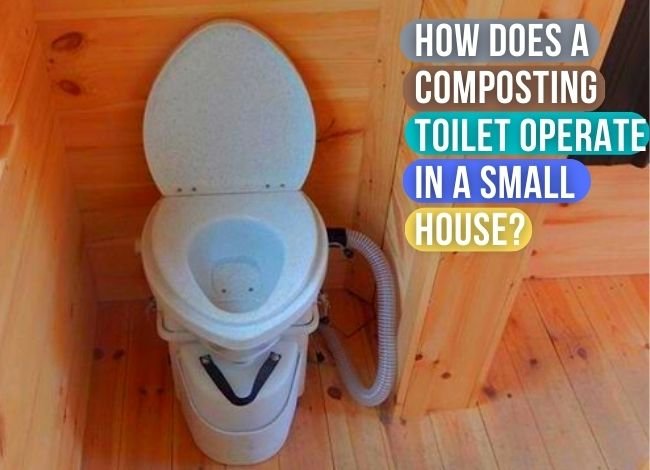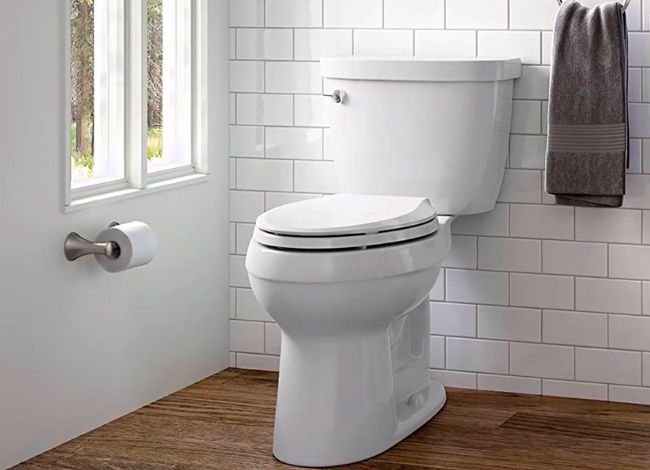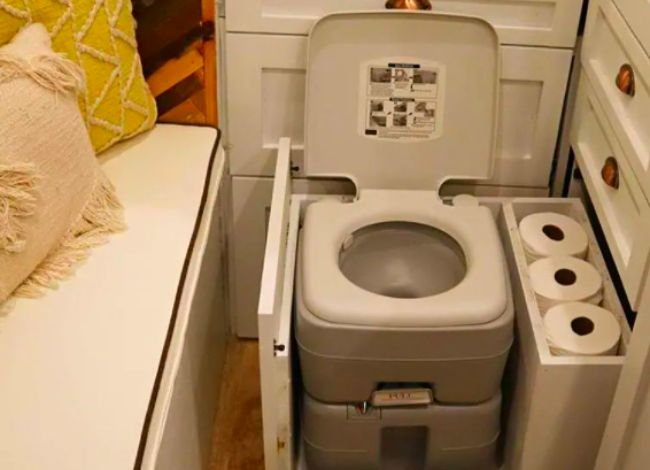
Composting toilets have become an essential fixture in the design of tiny homes due to their space-saving and eco-friendly nature. One of the core mechanisms of a composting toilet is the complete separation of solid and liquid waste. Unlike traditional toilets, composting toilets operate without the use of water, making them highly efficient and sustainable. This waterless function is especially beneficial for off-grid living and eco-conscious homeowners.
To manage odor, materials like peat moss or wood shavings are used inside the compost chamber. These help absorb moisture, facilitate decomposition, and neutralize unpleasant smells. In some cases, if the waste decomposition process slows down, certain eco-safe chemicals or compost accelerators can be added to enhance breakdown.
Tiny homes benefit significantly from composting toilets because they require minimal space and have a straightforward installation process. These toilets often use biodegradable liners or bags to collect waste, making the composting process cleaner and more manageable. Disposing of liquid waste is also convenient, especially if you’re using RV dump stations or similar waste management facilities.
However, it’s important to maintain a regular cleaning schedule. The entire system should be emptied and cleaned every 3 to 7 days to ensure hygiene and prevent odors or clogs.
The Importance of Composting Toilets in Small House Living
In a small house or off-grid cabin, composting toilets are not only practical but also cost-effective. Unlike conventional systems that rely on expensive plumbing or septic installations, composting toilets eliminate the need for such infrastructure—saving thousands of dollars in installation and maintenance costs.
This makes them a popular choice among tiny home owners, minimalists, and off-grid enthusiasts. Most modern tiny homes are equipped with composting toilets as a standard feature because they align perfectly with the principles of sustainable living and space efficiency.
How Do Composting Toilets Work in a Tiny House?
Composting toilets are specially designed for compact living spaces. They feature a urine-diverting system, which separates liquid waste from solid waste to speed up the composting process and reduce odor. Typically, the system includes two separate containers or compartments: one for solid waste and another for liquid.
- Solid waste is stored in a chamber lined with composting materials like coconut coir or peat moss.
- Liquid waste is diverted into a separate container, which should be emptied more frequently to avoid odor and clogs.
In some designs, all black water may be diverted into a gray water system, although this depends on the toilet model. It’s important to empty the solid waste every 2 to 3 months, and the liquid container every few days, depending on usage.
What Are the Best Alternatives to a Composting Toilet for a Tiny House?
While composting toilets are a popular choice for off-grid and eco-conscious tiny homes, several alternative toilet options offer practical solutions based on your space, plumbing, and water availability. Let’s explore some of the top alternatives to composting toilets for tiny houses.
1. Flushing Toilet (Traditional Two-Piece)
A two-piece flushing toilet remains a classic and reliable option, even in a tiny house. If your small home is connected to plumbing or a portable septic system, installing a flushing toilet is relatively easy. However, this setup requires a black water tank and sufficient outdoor space for a septic or sewerage system, typically in a lawn or garden area.
Keep in mind that water usage and storage will be your biggest considerations. If you’re aiming to conserve water, this may not be the most efficient choice.
2. Cassette or Caravan Toilet
Commonly used in RVs and camper vans, cassette toilets (also called caravan toilets) can be a compact solution for tiny homes. These toilets come with a removable waste tank, making disposal easy at designated dump stations.
Their built-in low-flush system uses minimal water and doesn’t require a full-scale septic hookup. However, you’ll need to regularly empty and clean the waste cassette, which might not suit everyone’s lifestyle.
Helpful Tips for Using and Maintaining a Composting Toilet
If you choose to stick with a composting toilet, here are some useful tips to enhance performance, reduce odor, and promote faster composting.
1. Coffee Grounds
Adding used coffee grounds to your composting chamber can help neutralize odors and improve the smell. This eco-friendly addition also aids the breakdown of waste, contributing to a healthier compost environment. You can also use natural disinfectants with a pleasant scent to further control odor.
2. Composting Worms
Composting worms, such as red wigglers, are incredibly effective at speeding up the decomposition process. Also known as vermiculture, this technique transforms waste into rich compost much faster. Worms thrive in a composting toilet setup and significantly reduce solid waste volume.
3. Pine Shavings and Sawdust
Using pine shavings or sawdust is an excellent way to maintain moisture balance and reduce odors. Make sure to cover each use with a layer of sawdust to keep the lower section clean and functioning efficiently. These materials also aid in aeration and compost breakdown.
Is a Composting Toilet Worth It for a Tiny House?
Absolutely. Composting toilets are one of the most practical and eco-friendly choices for tiny homes. Here’s why:
- ✅ No plumbing or septic system required, saving on installation costs
- ✅ Water-saving—uses little to no water
- ✅ Low maintenance with proper care
- ✅ Produces organic compost beneficial for plants and gardens
- ✅ Helps reduce environmental impact and supports off-grid living
Urine, when diluted, serves as an excellent liquid fertilizer due to its high urea content. The solid waste, once properly composted, can be used as nutrient-rich compost for non-edible plants.
Modern composting toilets also feature urine-diverting systems that make waste management more hygienic and efficient. They’re compact, affordable, and often require little more than a compost bin and the right organic materials to function optimally.
Final Thoughts
If you’re living in a tiny house and looking for a cost-effective, eco-conscious, and space-saving toilet solution, a composting toilet remains the best bet. However, alternatives like cassette toilets and compact flush toilets also offer viable options depending on your water access and waste management preferences.
In the end, the right choice depends on your lifestyle, mobility, budget, and desire to live sustainably.
We are really lucky to have a hard-working, multi-skilled plumber on our team. Collin D. Gallegos, a professional plumber who has worked with us since 2012, is an expert in vent, septic, and drainage systems. He is a Certified Master Plumber and has worked on various commercial plumbing projects. He usually helps our readers resolve plumbing and pipe-related issues with a proper DIY troubleshooting and repair guide.